Twelve
THEATERS LETS GO TO THE MOVIES
Los Angeles may have been consumed by the cult of the car, but it was in the movie theater that the fantasy of gold paint, murals, and dazzling light sconces on the walls surpassed the fiction on the silver screen. In downtown Los Angeles’ gilded auditoriums, stars forever shone. On Broadway, the Los Angeles Theater had its own building with architecture so wondrous that even those without a dime for the movie, got a nickel’s worth of joy from the ornamentation of the building. As the town grew outward from downtown, more modest theaters arrived in the neighborhoods, but the tradition of the grand movie house did continue on Hollywood Boulevard.

THE PALACE THEATER ON BROADWAY. The Palace Theater, on Broadway between Sixth and Seventh Streets, was a 1911 design by architect G. Albert Lansburgh, for the Orpheum Vaudeville Circuit. The Palace enlivened the streetscape with its facade of polychrome terra cotta arches by sculptor Domingo Mora. Lansburgh was the principal architect of theaters on the West Coast from 1900–1930.

STATE THEATER. The State Theater on Broadway at Seventh Street was built in 1921 for the Loews Circuit. This structure’s contribution to the elegance of the Broadway Theater district is the elaborate “silver platter” chased ornament above the ground story.
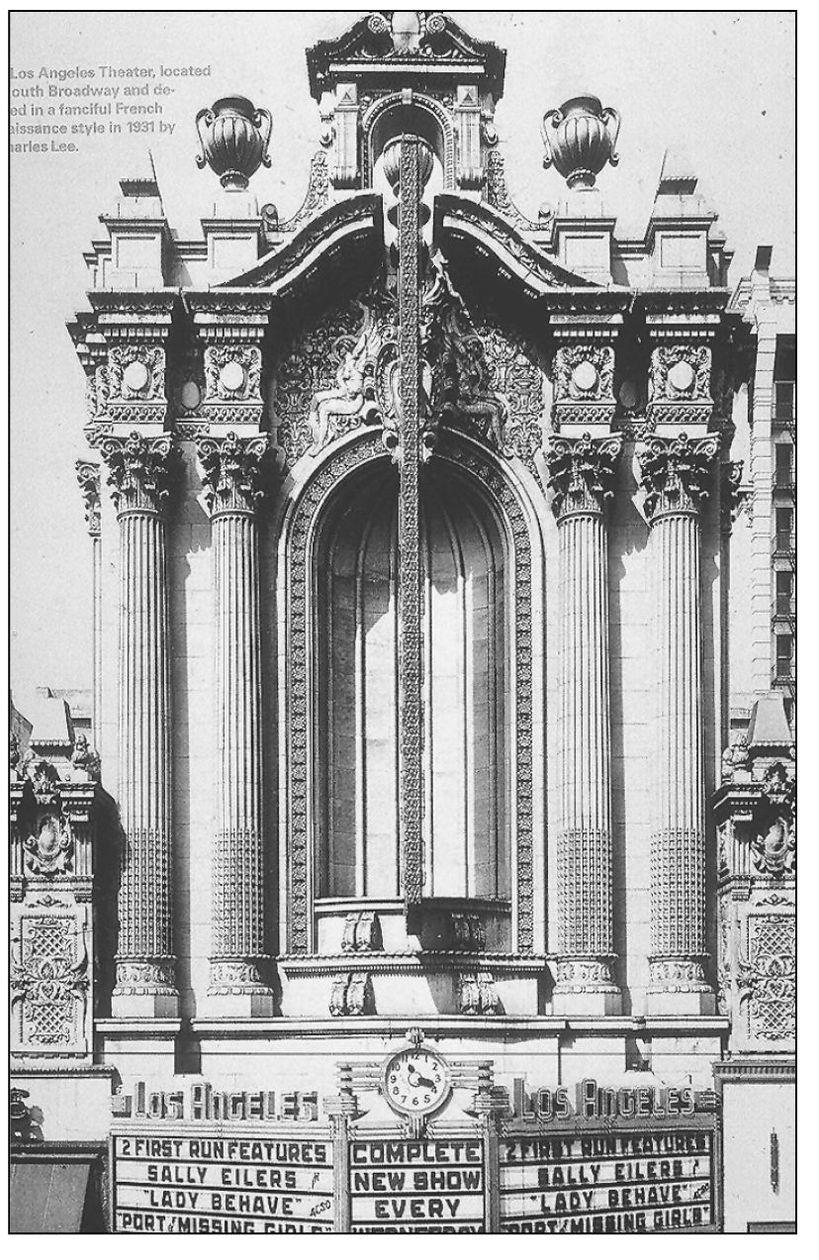
LOS ANGELES THEATER. The grandest example of theater decoration in downtown Los Angeles, the Los Angeles Theater, designed in 1931 by S. Charles Lee, is regarded as the master of movie palace expressionism. Classical grandeur and Baroque ornamentation were applied with the utmost exuberance.
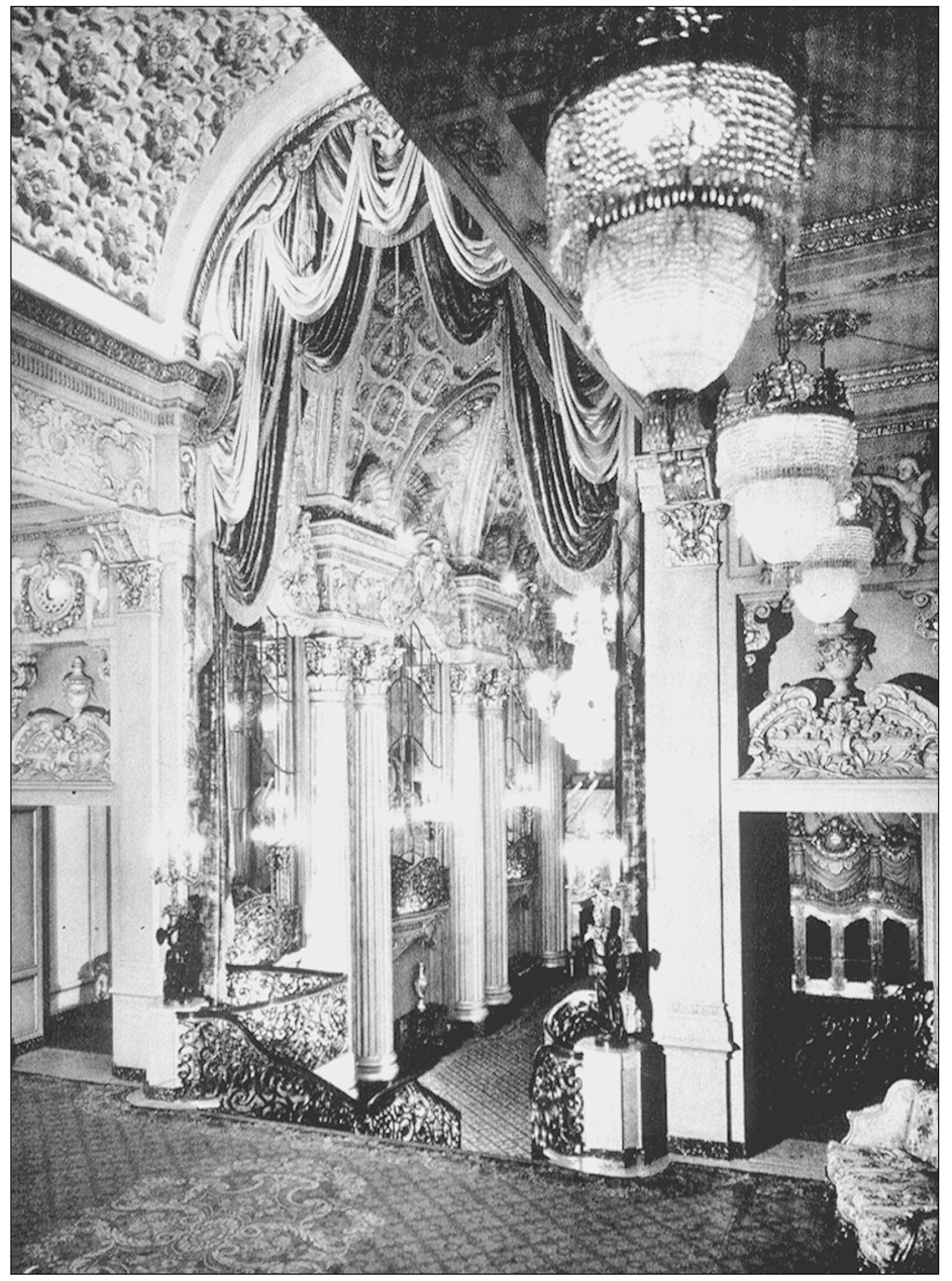
LOS ANGELES THEATER INTERIOR. Architect Lee is said to have modeled the opulent interior of the Los Angeles after the Hall of Mirrors in Versailles. A crystal fountain was placed at the head of the grand staircase. The theater had a restaurant and a ballroom on the lower levels.
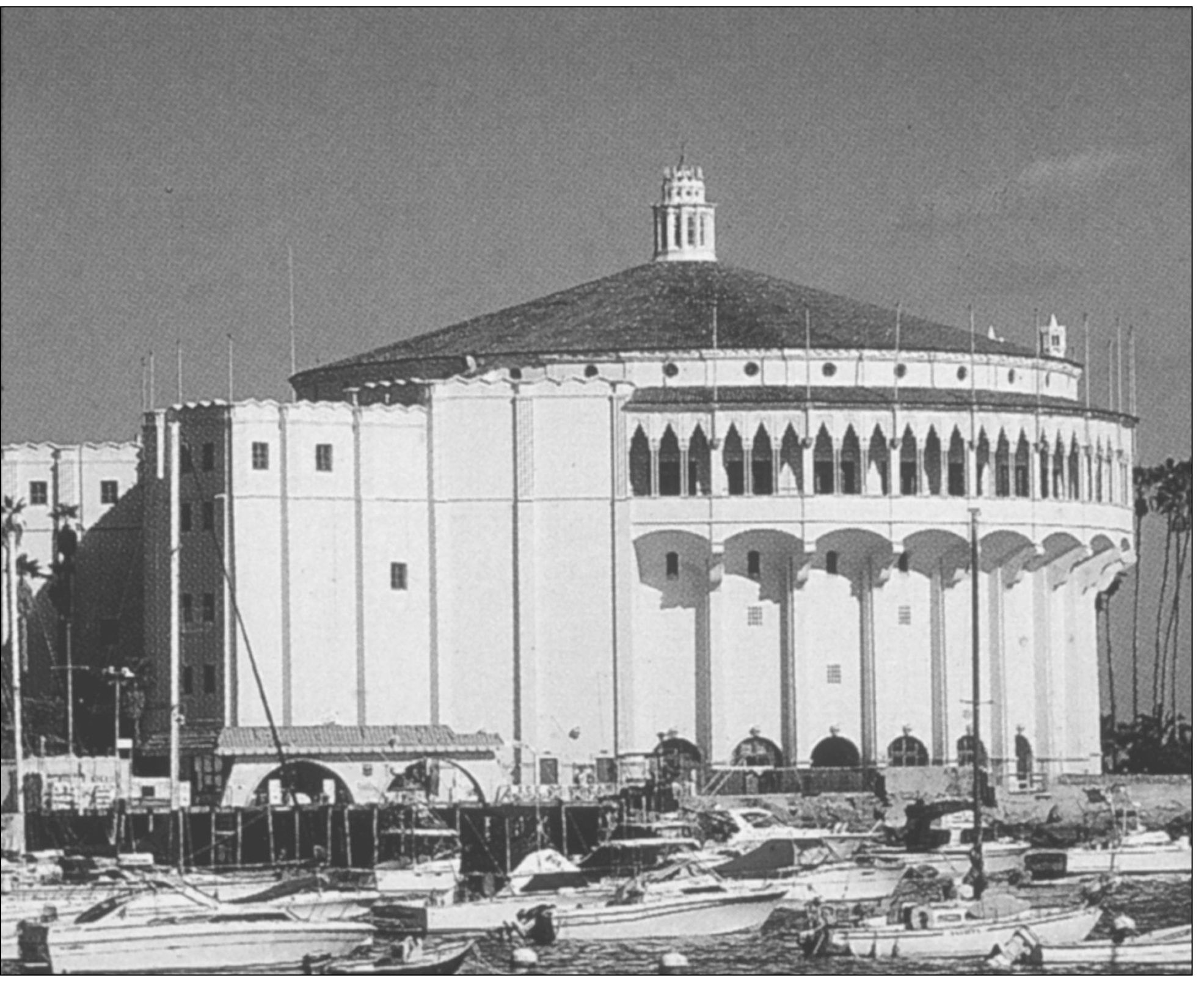
THE AVALON ENTERTAINMENT COMPLEX, CATALINA ISLAND. The nine-story, steel reinforced, Art Deco Avalon Casino, c. 1929, has a theater with a full working stage and a famous circular ballroom on the top floor. At one time, visitors taking the ferry from the mainland could dance in the casino by night and by day watch spring training by the Chicago Cubs baseball team, then owned by Catalina Island’s developer William Wrigley Jr. The 110-seat theater has a renowned Wurlitzer organ still used for Sunday concerts.
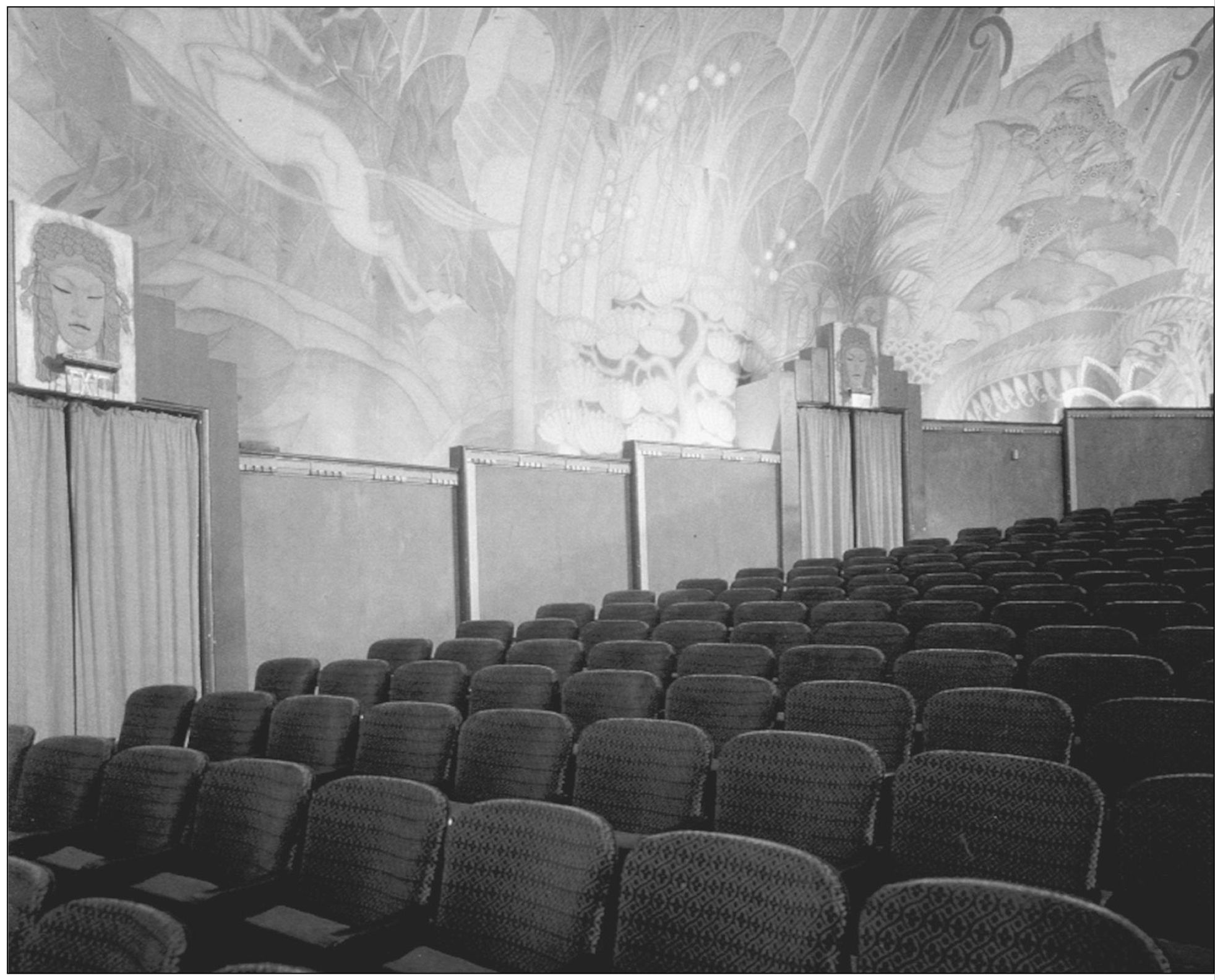
INTERIOR OF THE AVALON THEATER. In the interior of the Avalon Theater, Art Deco light fixtures highlighted fantasy murals painted by artist John Gabriel Beckman. When his original painted murals in the outer foyer were damaged by sea air, Beckman crafted them in tile.
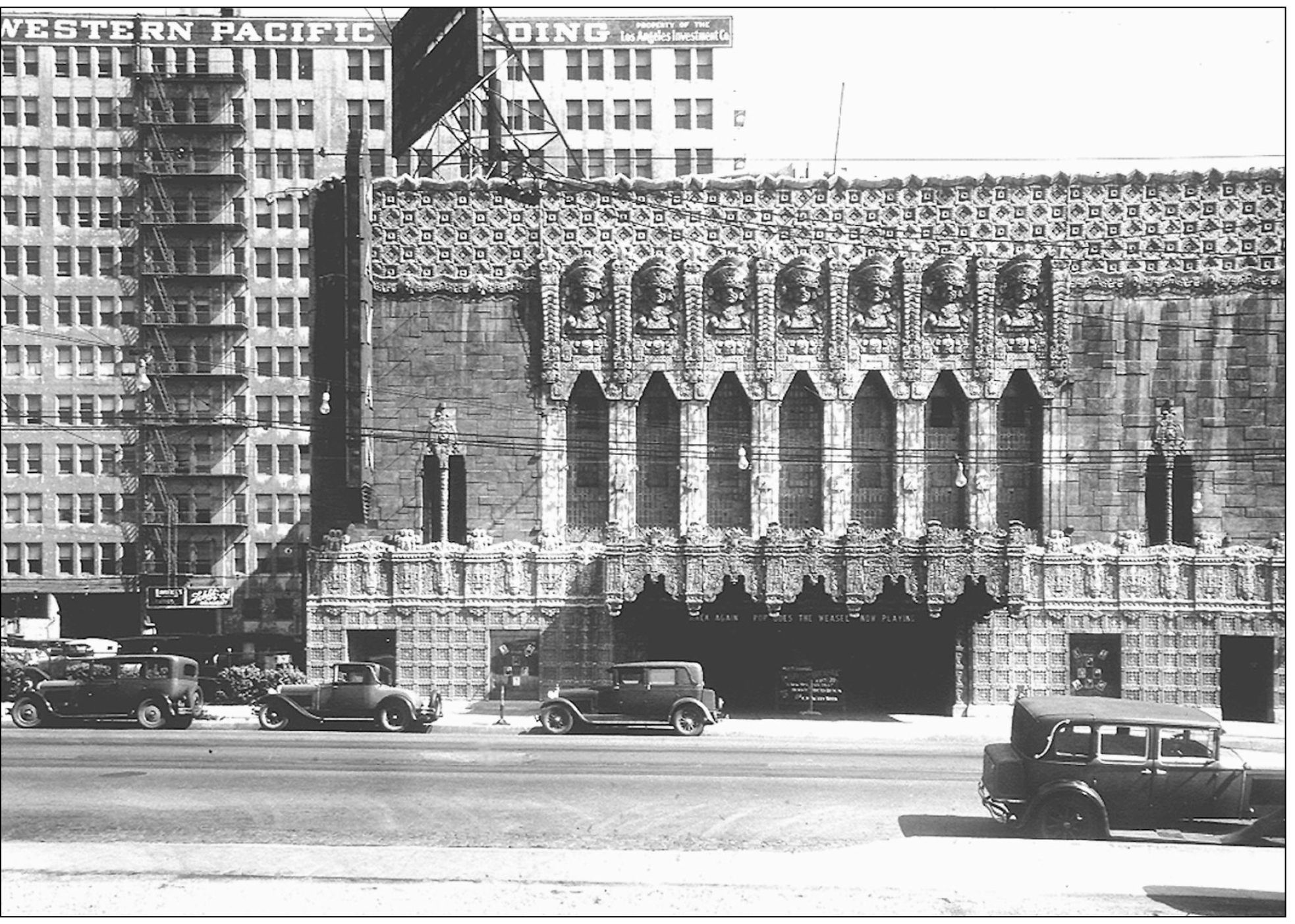
MAYAN THEATER. The Mayan Theater was designed in the heyday of Period Revival building in Los Angeles. Instead of following European and Near Eastern stylistic precedents, it derived its style from the American hemisphere, using the decorative arts of Southern Mexico and Central America for the theme. Architects Morgan, Walls, and Clement provided owners with a plain-front building. Artist Francisco Cornejo was hired to decorate the building.
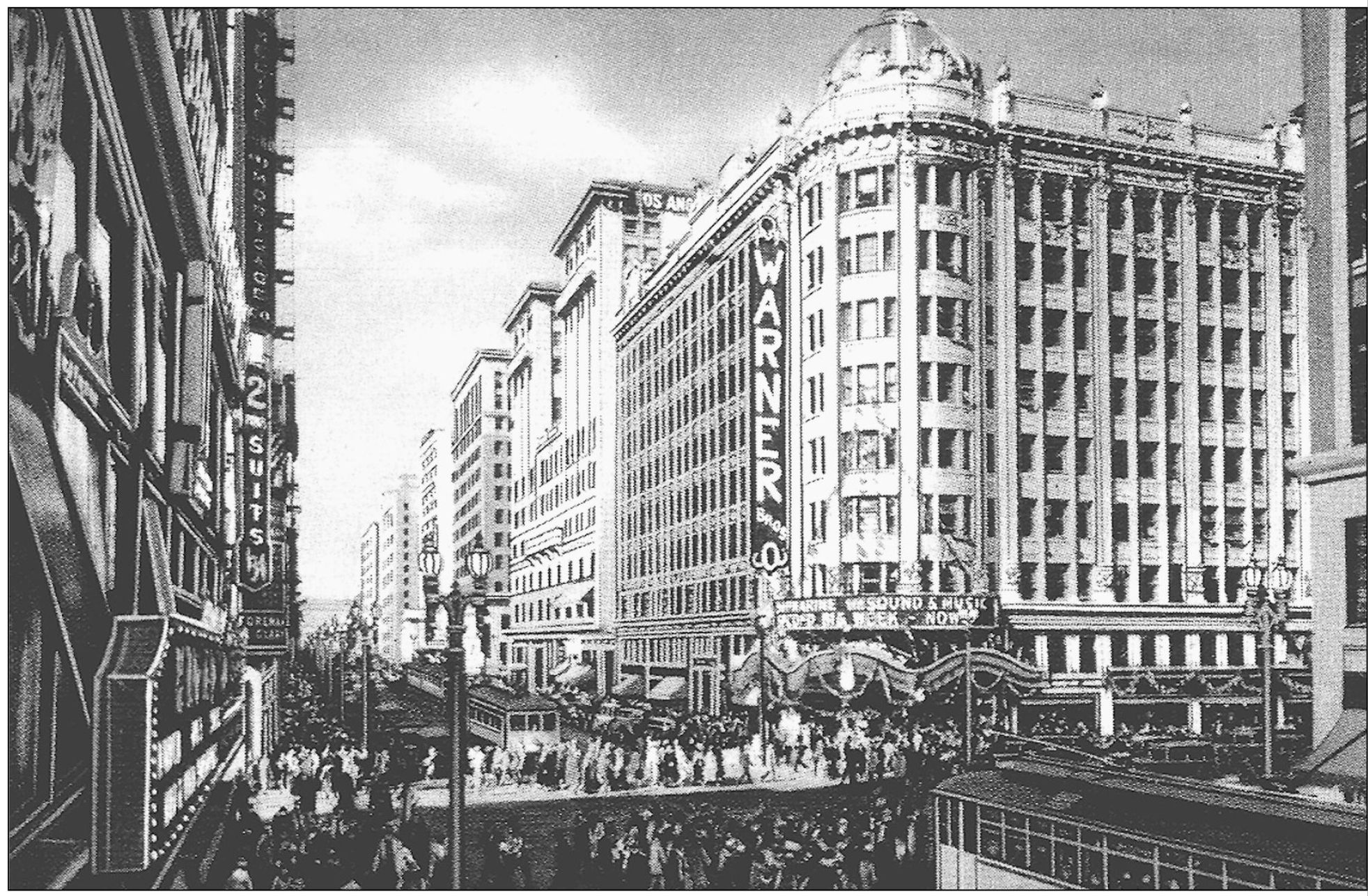
WARNER BROTHERS BUILDING AND PANTAGES THEATER. The imposing Warner’s Building dominated the northwest corner of South Hill and West Seventh Streets with twin facades extending from its corner tower. The landmark round dome atop the tower guided theatergoers to the Pantages Theater below.
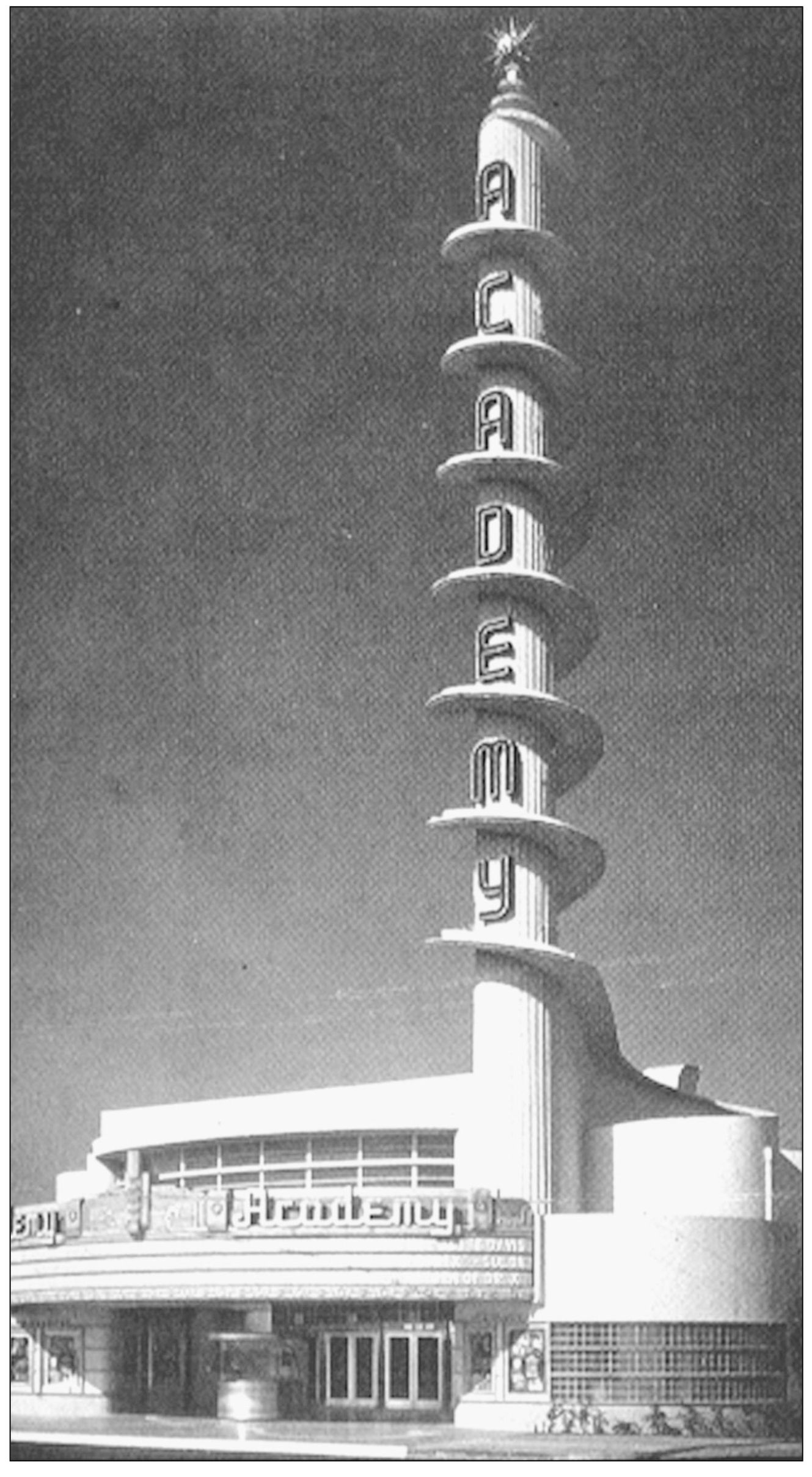
THE ACADEMY THEATER . Also an S. Charles Lee theater design, the Academy is a landmark in Streamline Moderne design. The rolling stucco cylinders of the base, glass block, ticket booth, and Art Deco lettering are meticulously crafted details of a composition directing focus to the tower. Its spiral fins were originally lit by blue neon tubes.